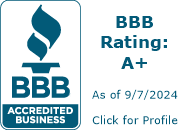What Customers Want
How to find out what your customers need and the best way to get it for them.
If you own a business, you know you need insurance for your company. It protects you if something goes wrong with your building, the materials you use to make the product you sell, and your finished products. Our foundational Businessowners policy is a great starting point.
Here’s something else your business needs: a product or service that your audience is interested in. Try these three tactics to find out what your customers want and the best way to provide it for them.
- Ask them
- Take time to review
- Gradual rollout for feedback

Ask them
Seems simple enough, doesn’t it? But it’s not always easy to get the best information. Asking your customers (or if you’re just starting a business, your friends and family) can start with a basic question like, “What do you want?”
From there you’ll need to do a little digging. If customers want a product you’re already offering, what do they like best about it (so you can emphasize that) or what do they want to tweak to improve it? If you’re looking to fill a gap you think you spot in the market, is it worth your time and effort?
Take time to review
In the modern world we’re always looking to move forward, bringing in new business and trying new ideas. Don’t forget to take a look back now and then, too. You can make sure that you’re giving your customers what they want (which you discovered because you asked them).
You might save an old email or download a white paper with useful information — but if you don’t take the time to go back and review your email or read that white paper, it’s just somewhere in storage.
Gradual rollout to get feedback
When you have a new product or service and you’re proud of your accomplishment, it’s no surprise that you want everyone to know about it right away. But if there’s a problem you don’t realize developed during your product’s creation, or if people aren’t using your service the way you expected them to, you’ll have to fix it while it’s out in the world. That can get confusing, with some people using the old version and others the new.
Divide your audience into several groups, maybe by location or find a set of customers who you know will give you good feedback. Introduce your new product or service just to them for a few weeks and ask them for their reaction. Make some adjustments, then add more people to your “test” group. Keep expanding your audience until your product or service is ready for everyone — and it’s as good as it can be.
The Mutual Understanding blog and Hastings Mutual videos are made available for educational purposes only. The information referred to is not an official company statement, corporate policy, or offer of coverage. Refer to your insurance policy for specific coverage. There is no representation as to the accuracy or completeness of any information found by following any link on this site. Please contact your local independent insurance agent with further questions and for more details on any insurance policy-related information you read here.
© 2021 Hastings Mutual Insurance Company. All rights reserved.
Related Blog Posts
-
 Words From Our Customers
Words From Our Customers
What our customers say about us, and how we’re helping them.
-
 The Easiest Way To Find Customers Online
The Easiest Way To Find Customers Online
You know you need to get online, but how? When? Where?
-
 Insurance 101 – Key Terms
Insurance 101 – Key Terms
Here’s a little dictionary of some of the most common terms you’ll see and hear when working with Hastings Mutual.
Hastings Insurance Company
404 E. Woodlawn Ave.
Hastings, MI 49058
Monday-Friday
8:00 a.m. - 4:30 p.m. (EST)
(800) 442-8277
Terms of Use and Privacy Statement© Hastings Insurance Company. All rights reserved.



